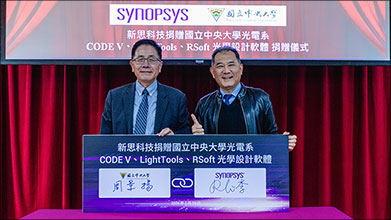Cloud native EDA tools & pre-optimized hardware platforms
In prior posts, we described several space missions and instruments in which Synopsys software and our engineering services consulting team were involved. This final installment describes the technology revolution that is enabling smaller, lighter, and higher-performing space-based optical systems.
The Challenges of Optics in Space
Space is an extreme environment, and there are big challenges when putting optics there. The optics and optomechanical assemblies need to be strong enough to withstand the forces of a rocket launch – and yet still be as lightweight and compact as possible to reduce costs. Often the entire optomechanical assembly needs to be “folded” for launch and then reliably deployed in an aligned configuration in space. Radiation effects, operation in a vacuum, and the potential for large thermal shifts also needs to be considered. Technological progress in materials, optics fabrication/testing, as well as active compensation are enabling lower weight, higher performance instruments in a more compact (lower cost) volume. Future sensor advances offer even more promise.
Strong but lightweight materials are a key enabling technology for space systems. A decade ago, it cost NASA approximately $10,000 to put one pound (0.45 Kg) of equipment into orbit. Today, one of the commercial vendors of space launch vehicles has reduced this to about $2,500 per pound. Amazing progress, but still pricey!
Lightweight materials such as honeycombed aluminum for structures, diamond-milled glass ceramics, and silicon carbide or Beryllium for optical mirrors have been in use for many years. Current research in nanocomposites — such as carbon nanotubes — that can be manufactured with “designer” properties holds a lot of promise for additional weight reductions.
Designing with Freeform Optics
One of the big revolutions for more compact, space-based optics is the use of freeform optical surfaces. We define freeform surfaces as non-rotationally symmetric, as well as more complicated in their profile than simple cylinders or toroids. While software has been able to handle the design of freeform shapes for years, their use has become practical based on advances in fabrication and metrology. The Center for Freeform Optics (CeFO), of which Synopsys is a member, is advancing our understanding of theoretical design considerations to make the use of freeform surfaces highly effective, as well as advancing fabrication and metrology approaches for freeforms. Freeform optical surfaces will be launched with the next-generation Infrared Atmospheric Sounding Interferometer (IASI-NG), as well as other systems.

Rendering of the Nancy Grace Roman Space Telescope. Credit: NASA’s Goddard Space Flight Center
Adaptive Optics Correction
Another milestone for spaced-based optics is the use of adaptive optics correction for optical systems above the atmosphere that are looking out into space. The benefit of this technology will be used by NASA’s Wide Field Infrared Survey Telescope (WFIRST), which has been named the Nancy Grace Roman Space Telescope. The mission of the Roman Space Telescope is to directly image exoplanets. To do this, it employs a coronograph with specialized diffraction masks that cause the light from the primary star to “cancel out” via destructive . Small residual wavefront errors due to residual errors in the assembled telescope, as well as changes to the telescope optics due to mechanical and thermal stresses, are compensated by two deformable mirrors.
Curved Detectors Usage
Another potential revolution for space-based optics is the advent of curved detectors. Image-forming optical systems can be greatly simplified if the image is allowed to focus on a curved surface versus a planar surface. Curved sensors can allow for wider field of view optical systems with fewer optical components than currently required. While not a space-based instrument, the DARPA Space Surveillance Telescope (SST), designed by MIT Lincoln Laboratory, is a very wide field-of-view, very fast (f/1) system using a curved CCD. This allows the three-mirror system to avoid additional optics to correct for the natural field curvature (Petzval) in the system.
Conclusion
Space optics are challenging, but the march of technology has allowed great advances to be made.










